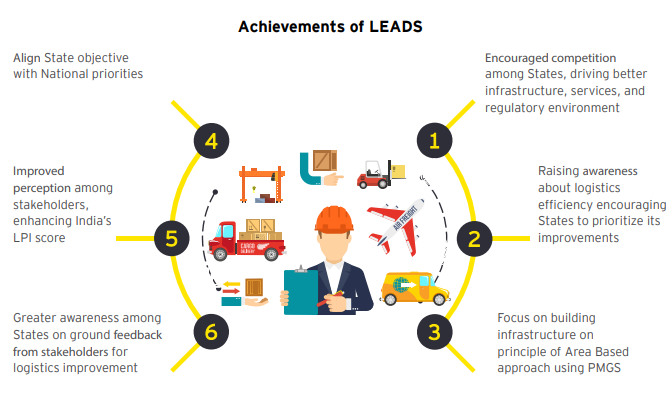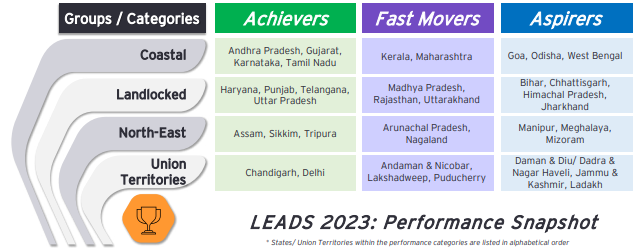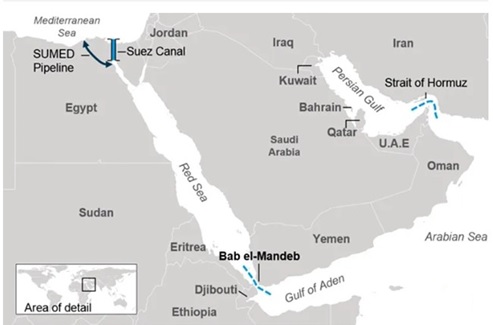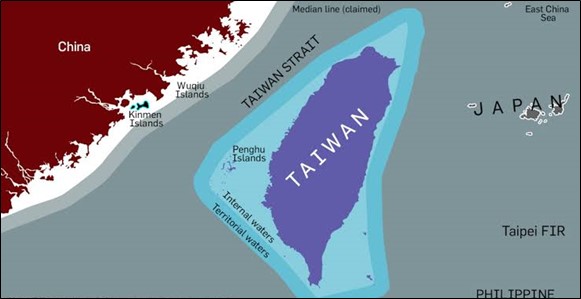Logistics Ease Across Different State (LEADS) 2023
The 5th edition of the LEADS annual exercise provides insights into improvement of logistics performance at State/UT level.
- Basis – Logistics Performance Index (LPI) of World Bank.
- Unlike LPI that relies entirely on perception-based surveys, LEADS incorporates both perception and objective data.
- Launched in – in 2018
- Objectives – To assess the performance of logistics eco-system across States and Union Territories (UTs) and to promote competitive federalism for development of logistics sector.
- Data source - A pan-India primary survey conducted across 36 States/UTs.
- 3 pillars of logistics performance - Quality of Logistics Infrastructure, Quality of Logistics Services, and Operating & Regulatory Environment.

Key findings of LEADS (2023)
- A positive shift in perception is spread across all the States and UTs plus across all the 3 pillars of logistics performance.
- A marked improvement in stakeholder satisfaction regarding ease of logistics when compared to 2019 perception results.
- Overall, pace of infrastructure development has increased consistently between 2014-15 and 2022- 23
- 23 States/UTs have also notified their State Logistics Polices to align with the National Logistics Policy and further, 16 States/UTs have given industry status to logistics.
- Digital reforms such as PM GatiShakti, Logistics Data Bank, Unified Logistics Interface Platform (ULIP), GST are propelling India’s improved ranking at global level.

Logistics sector will be a cornerstone in the endeavour to take India to a 10 fold growth from a USD 3.5 trillion to USD 35 trillion by 2047.
References
PIB| LEADS 2023
Astrashakti 2023
India demonstrated the firepower of the indigenous Akash missile system during the recent exercise ‘Astrashakti 2023’.
- Astrashakti - It literally means power of weapons.
- It is an air force exercise that held at Suryalanka Air Force Station in Andhra Pradesh.
- Aim – To serves as a platform to showcase the advanced capabilities of indigenous weapon systems.
- To underscore India's commitment to exporting its home-grown weapon systems to the global market.
- Demonstrations of SAMAR – Successful firing trials of SAMAR air defence missile
- Demonstration of Akash firing unit – A single firing unit of Akash weapon system simultaneously engaged and destroyed 4 unmanned aerial targets.
- Firing Level Radar (FLR) – It detects and tracks the target.
- Firing Control Centre (FCC) – It process the information.
- 2 Akash Air Force Launcher (AAFL) – It has 5 armed missiles, at 1st 2 Akash missiles were launched and the same launcher was assigned for next 2 targets.
- Thus all 4 targets were successfully engaged at maximum range (around 30 km) simultaneously.
India become the 1st country to demonstrate the capability of engaging 4 targets simultaneously at such ranges by command guidance using a single firing unit of Akash weapon system.
SAMAR (Surface to Air Missile for Assured Retaliation)
- It is an air defence system developed by a unit under IAF’s Maintenance Command.
- Features – It consists of a twin turret launch platform with the capability of launching 2 missiles in single and salvo mode.
- It can engage aerial threats with missiles operating at a speed range of 2 to 2.5 Mach.
Akash weapon system
- It is one of the indigenous defence systems that have bagged orders from international customers.
- Designed and developed by – DRDO
- Produced by – Defence PSU along with other industries.
- Deployed by – Indian Air Force and the Indian Army
- Export potential – It may get more orders from Southeast Asia and the Middle East.
According to data by Stockholm International Peace Research Institute (SIPRI), India has been the world's largest arms importer since 1993. But in 2022, India clinched a deal with Philippines to export Brahmos supersonic cruise missile.
References
- The Hindu| Exercise Astrashakti 2023
- The Economic Times| Demonstration of SAMAR
Veto power in UNSC
The US vetoed a resolution of the UN Security Council (UNSC) that called for a Gaza ceasefire.
All member countries of the UN are part of the General Assembly (UNGA) which can pass resolutions on relevant matters. Only a simple majority (of more than half the members) is required to pass its resolutions.
- UN Security Council (UNSC) - It consists 15 members.
- United States, the United Kingdom, France, Russia and China are the permanent members of UNSC and called as P5 countries.
- Based on UNGA elections, the 10 additional members are elected for 2 years each.
In 1965, the number of non-permanent UNSC members was increased from six to 10.
- UNSC resolutions are legally binding, unlike the UNGA’s.
- Each party has 1 vote and it needs minimum of 9 votes to adopt a resolution.
- Right to veto– Each of the P5 members has the power to veto a vote which is a negative vote against the resolution.
- According to UN Charter, if any 1 of the P5 members cast a veto in UNSC, the resolution would fail while abstaining from voting is not a negative vote.
- Exclusive veto power – After WW-II ended in 1945, the P5 were among the victors against Germany, Italy and Japan.
- The US, the UK and the USSR (later Russia) were accorded certain exclusive rights to themselves in UNSC recognizing their key role in ending the war and forming UN.
- They in turn offered seats to France and China that these countries would assume, or reassume, great-power status.
- Limitations – Current body is limited in terms of representation.
Dumbarton Oaks conference was held in Washington DC in 1944 which was attended by representatives of China, Great Britain, the USSR and the US in drawing the contours of UN.
References
The Indian Express| Exclusive veto power of P5 nations in UNSC
Algae-assisted Carbon capture
IIT Jodhpur’s innovative technology uses algae-assisted fuel cells to capture carbon dioxide, treat wastewater and generate power.
- It is an indirect method for converting CO2 into carbonates and then use it for algal growth.
- Aim – To generates power, algae biomass and treats water by utilising algae-assisted MFC for flue gas carbon capture.
Flue gas the gas produced from the flue or chimneys of thermal power stations and other industrial plants
|
Microbial fuel cells (MFC)
|
- A bio-electrochemical device that generates electricity by harnessing the metabolic activity of microorganisms.
- When microorganisms break down organic matter as in wastewater into simpler molecules, electrons are released in the process.
- If these electrons are made to flow through an external circuit, you get electric current.
|
- Working – CO2 from the flue gas is absorbed by the wastewater supplemented with sodium bicarbonate and generates flue-gas-derived bicarbonates (FGDBs).
- FGDB helps in growth of algae Chlorella vulgaris which is thermo-tolerant and can grow in wastewater.
- Algae-assisted MFC is then used to generate electricity.
- Significance – This indirect biochemical route of CO2 fixation is advantageous since more inorganic carbon can stay in the water.
- 1 tonne of algae captures 180 tonnes of flue gas CO2.
- For a cubic meter of wastewater and FGDB in MFC, they got energy of 0.0066 kWhr.
This is the 1st time that the integration of algae MFC with flue gas carbon capture has been attempted anywhere.
- Limitations – A tonne per day of CO2 capture requires 2 sq km algae culture area (aerial) in vertically aligned pipes.
Reference
The Hindu Business Line| Algae assisted Carbon capture
Oyster Restoration Program
Native oysters return to Belfast after a century's absence.
Oyster is the common name for a number of different families of salt-water bivalve molluscs that live in marine or brackish habitats.
- Introduction - They are released in cages fitted with shelves.
- Objectives – To help restore the native population of the species, improve water quality and boost marine biodiversity.
- A local equivalent of a coral reef – Oysters conjoin with each other to form a reef.
- Promote marine biodiversity – Once they start forming their beds then small fish and crustaceans like worms, snails, algae and many more will come to live and feed there.
- Filters water - They are supreme water filters, with just 1 animal able to filter over 200 litres of seawater a day.
Until the early 1900s, the narrow Belfast Lough channel in Ireland was home to large oyster reefs but overfishing, disease and pollution gradually decimated the population.
Reference
The Hindu| Oyster Restoration Program
|
Other Important Topics
|
|
JN.1
- A case of JN.1, subvariant of COVID19 has been detected in Kerala, as part of surveillance activity by Indian SARS-CoV-2 Genomics Consortium (INSACOG) recently.
- It is a descendant of the Pirola variant (BA.2.86), carries an additional mutation on its spike protein.
- It is capable of spreading faster and evading immunity.
|
|
Ketamine
- Ketamine is an illegal recreational anaesthetic drug that has been listed as a hallucinogen by the US Drug Enforcement Administration.
- It is used to treat mental health treatments like depression and Post-Traumatic Stress Disorder (PTSD).
|
|
Mount Vinson
- Kerala’s Shaikh Hassan Khan now scales Mount Vinson in Antarctica recently to spread awareness of climate change happening in Antarctica.
- Mount Vinson, also known as Vinson Massif, is the highest mountain in Antarctica and one of the 7 Summits, which are the highest peaks on each of the world's 7 continents.
- Mount Vinson is located in the Sentinel Range of the Ellsworth Mountains, about 1,200 kilometers from the South Pole.
- It was discovered in 1935 by American explorer Lincoln Ellsworth.
|
|
Kakrapar Atomic Power Project (KAPP-4)
- The 4th unit of the Kakrapar Atomic Power Project (KAPP-4) started controlled fission chain reaction and thus became critical recently.
- It is a nuclear power plant situated in Gujarat.
- It is the 2nd of 16 indigenous Pressurised Heavy Water Reactors (PHWR) of 700 MW.
- It is operated by the Nuclear Power Corporation of India Limited (NPCIL).
|
|
Red Sea
- The Red Sea is a narrow inland sea between Africa and the Arabian Peninsula and most heavily travelled waterways between Europe and Asia.
- It is connected to the Arabian Sea and the Indian Ocean to the south through the Gulf of Aden and the narrow strait of Bab el Mandeb.
- The northern portion of the Red Sea is bifurcated by the Sinai Peninsula into the Gulf of Aqaba and the Gulf of Suez, where it is connected to the Mediterranean Sea via the famous Suez Canal.
- It's one of the world's warmest and saltiest seas, and is high in nutrients and plankton.

|
|
Taiwan Strait
- The Taiwan Strait is also known as the Formosa Strait that separates mainland China and the island of Taiwan.
- The strait is part of the South China Sea and connects to the East China Sea to the north.

- The strait is an arm of the Pacific Ocean and extends from southwest to northeast.
|
|
‘NAMAN’ (NIMHANS-AHT Comprehensive Mental-Health-Action-Program for Rural Communities)
- NAMAM programme is recently being implemented in 2 taluks of Karnataka and Uttarakhand and is expected to be completed within 3 years.
- It is a collaborative intiative of National Institute of Mental Health and Neuro Sciences (NIMHANS) & Bengaluru and the Ashraya Hastha Trust (AHT).
- NAMAN is a rural mental health program that aims to provide preventive, therapeutic, and rehabilitative care to the entire population of the target taluks.
|
|
Surat Diamond Bourse
- PM inaugurates Surat Diamond Bourse in Gujarat recently.
- It is world’s largest and modern centre for international diamond and jewellery business and is part of the Diamond Research and Mercantile (DREAM) City.
- It will be a global centre for trading of both rough and polished diamonds as well as jewellery.
|
|
Gelephu Smartcity Project
- The Gelephu project is a mega project in Bhutan to have 1,000-sq. km. green city along Assam border ‘connecting South Asia to Southeast Asia’.
- There are also discussions about a 58-km rail link between Gelephu and Kokrajhar in Assam were also held.
|
|
FDI in India
- Tamil Nadu ranks 4th in attracting FDI in the period between Oct 2019 and September 2023, after Maharashtra, Karnataka and Gujarat.
- The total FDI inflow includes equity inflow, equity capital of unincorporated bodies, re-invested earnings and other capital.
- A foreign direct investment (FDI) refers to purchase of an asset in another country, such that it gives direct control to the purchaser over the asset.
|

